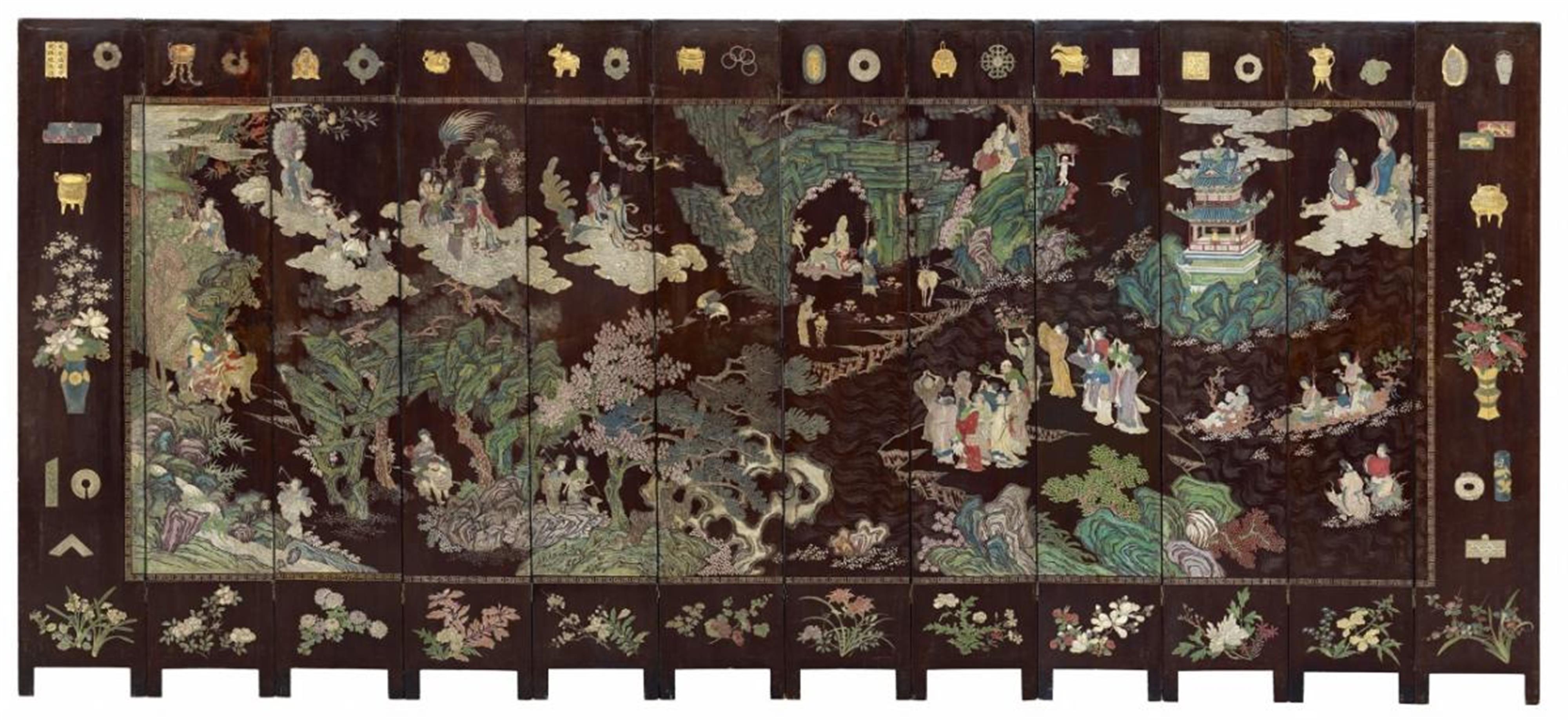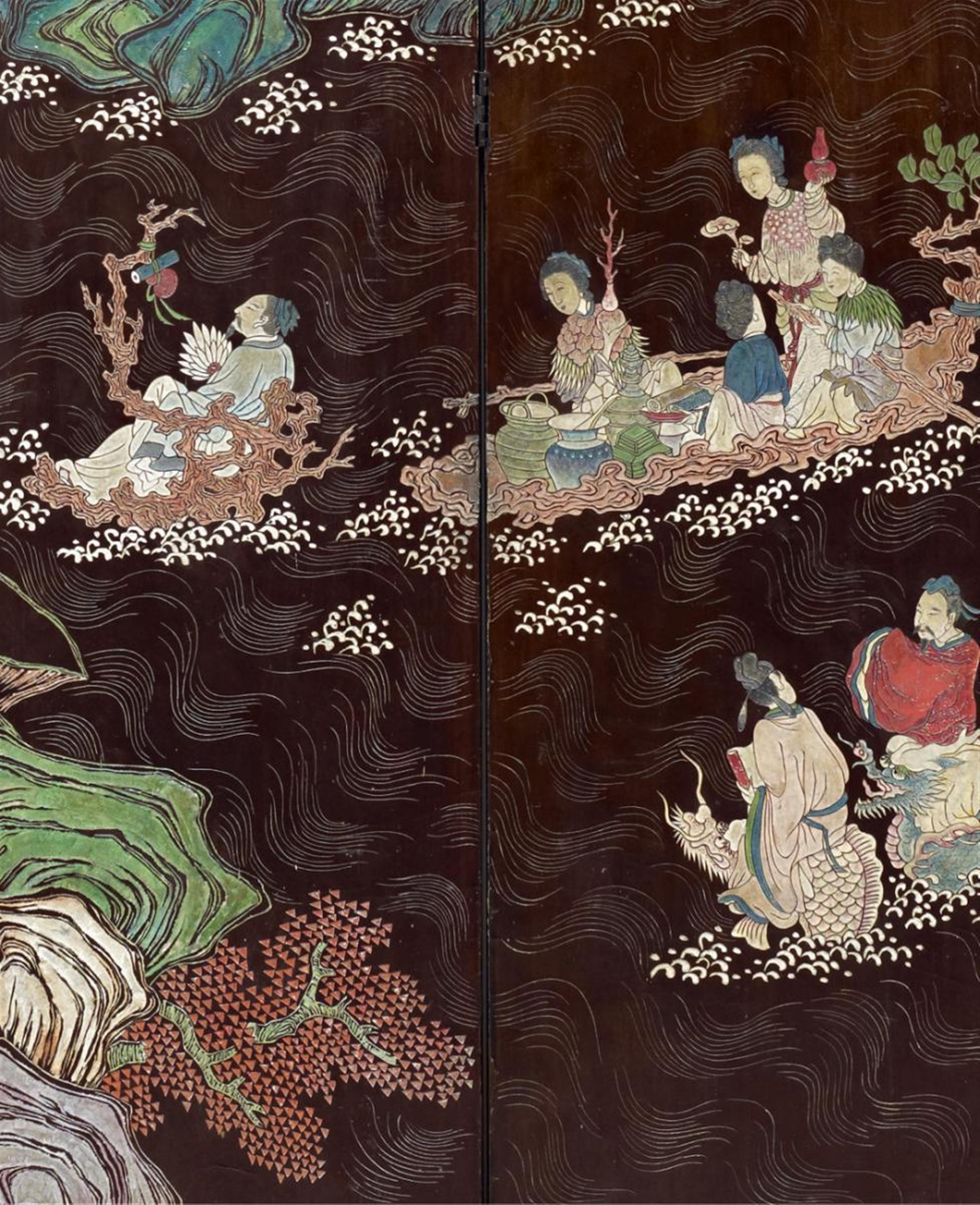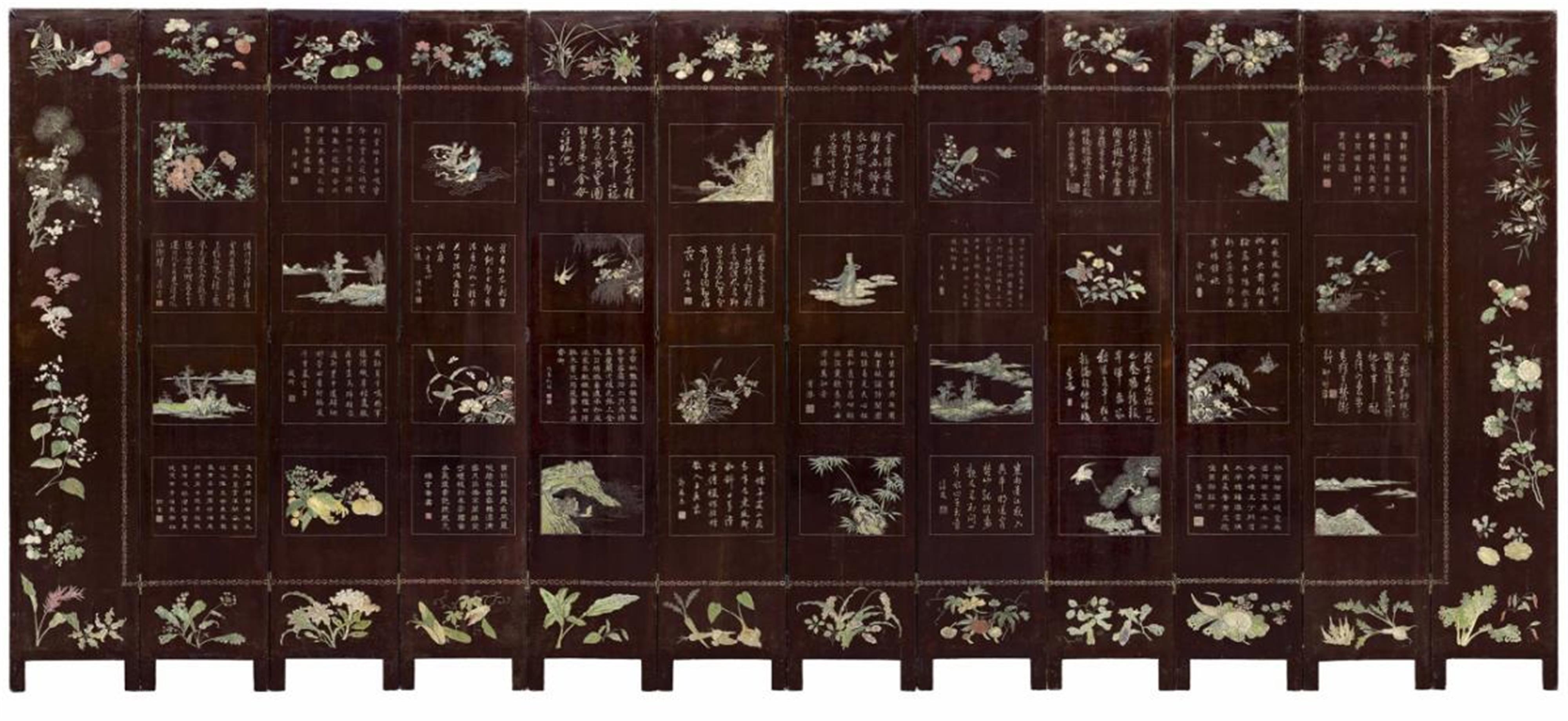A twelve-panel coromandel screen. Wood, Lacquer and colours. Qing dynasty, Kangxi period (1662-1722)
Carved on both sides, the front depicting a festive birthday celebration in the Daoist paradise set in a landscape with rocks, pine trees and the island Penglai. As Xiwangmu and immortals converge bearing gifts, the focus of attention is Shoulao seated in a grotto surrounded by deer, cranes and lingzhi, all symbols of longevity. The scene is surrounded by a band displaying the Hundred Antiquities motif at the top and flower sprays at the bottom.
The reverse displays ten panels with two signed poems and two pictorial motifs each, surrounded by flowering branches, fruits and vegetables. The twelve wooden panels are joined together by hinges. Figure group on the second to last panel and small surrounding areas retouched. Generally good condition.
Height 245 cm; panel width 45.8 cm, total width 550 cm
This coromandel screen in kuancai technique is a well known type of congratulatory screen popular in the Kangxi period. It represents the Daoist paradise in a landscape consisting of the Eastern Sea to the right and a rocky landscape to the left. Lively groups of immortals approach to congratulate Shoulao. A very similar screen in composition, setting and figure groups was sold at Sotheby's New York in June 1993, illustrated in W. de Kesel and G. Dhont, Coromandel Lacquer Screens, Ghent 2002, p. 66, ill. 44.
Twelve-panel screens were often produced as birthday gifts for high-ranking officials. All motifs depicted are auspicious. Deer and cranes feature prominently as well as the peach. Four huge peaches are carried by two servants, a human-like monkey carries a tray filled with peaches while the mischievous Dong Fangshou has stolen peaches from Xiwangmu's garden. Among the emblematic antiquities featured on the top border we find a halved peach stone with an inscription to both rims. The inscription reads: "written down on the dingyou day, of the jiashen month in the gengzi year / Queen mother of the West bestows peaches upon the Han emperor Wu, Xuanhe Hall" and refers to a poem by Song Lian (active early Ming dynasty). After he was shown a large gilded peach kernel he composed the poem on the kernel of a peach of immortality. The date mentioned in this text refers to the second year of Xuanhe (1120). This inscription on a peach stone seen on coromandel screens is easily misinterpreted as the Kangxi date of 1660/1720.
康熙 褐漆款彩十二扇屏風《庚子年甲申月丁酉日記 西王母賜漢武桃 宣和殿》款
Provenance
Private collection of Didier Aaron (1923-2009), Paris
Literature
Published in: Thibaut Wolvesperges, Le Meuble Francais en Lacque au XVIIIe Siecle, Bruxelles 2000, p. 53






